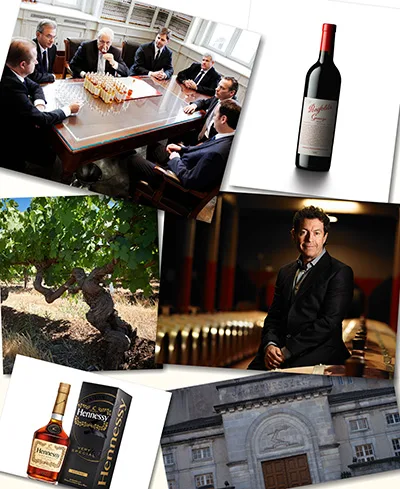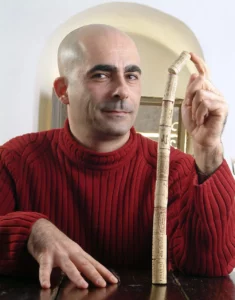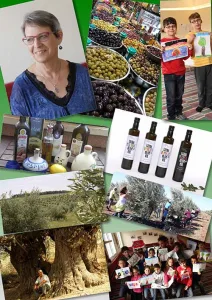I recently was invited on two successive days to events hosted by Hennessy Cognac and Penfolds Winery. These are icons in the wine and spirits world, from France and Australia respectively. They both illustrate the same immense pride in heritage, a mission of continuity, attention to detail, whilst producing wines and spirits of style and quality.
Hennessy Cognac was founded by Richard Hennessy in 1765, two hundred and fifty four years ago! His son James Hennessy gave the company a new name ‘Jas Hennessy & Co’ in 1813. More recently, the company partnered with Moet et Chandon, the leading champagne company, to combine the two precious jewels from those two protected areas, Cognac and Champagne, whose very names evoke added value. In 1987 they came under the wing of LVMH, the ultimate luxury goods group.
Throughout this long history, Hennessy has been the number one Cognac house in both sales and prestige. They sell between 40 to 50% of the world’s Cognac. An astonishing figure of domination. However, despite this exalted position, they have never lost their focus on company values and quality.
The art of making great cognac is the art of blending. They receive eaux de vie from five of the six different crus (registered regions) and the master blender has to cope with the vagaries of the harvest and the regional differences, to blend final products which have the quality and consistency demanded by cognac aficionados, being loyal to the house style of over 250 years!
It was astonished to learn that for the last eight generations, the crucial figure of Master Blender has been the responsibility of one family. In 2017 the latest in this unique chain was appointed. Renaud Fillioux de Gironde took up the baton after a rigorous apprenticeship under his uncle, the 7th generation Yann Fillioux. When he took over, Renaud was 39 years old. Previously he was the winegrower manager, responsible for the vineyards in five different crus or growing regions officially demarcated by cognac. He was groomed for the role in the tasting committee for 15 years, with the daily tasting held every day at 11.00 am without fail.
The tasting room looks like a time warp of previous centuries. The furniture has not changed and there are no modern appliances. Even the priceless note books containing all the blending secrets are still written in long hand. No-one has attempted to bring things up to date by entering the notes onto a computer. Instead they pride themselves in maintaining the past to look after the future. This is similar to the agriculturist who plants a tree, with the understanding this is not for him, but his son and grandson. In the same way Fillioux blends carefully for the library of cognacs which may be used in generations to come, or even in future centuries.
It is mind blowing and heartwarming that this respect for the past and responsibility for the future is the culture of a modern global brand, dealing in a modern world where instant satisfaction, sales and profits have overriding importance.
That is the world of spirits. The next day I found an equivalent in the world of wine. Penfolds is an Australian winery founded in 1844 by Christopher Rawson Penfold, an English doctor, and his wife, Mary Penfold. They brought over vine cuttings on their voyage and planted a vineyard at the Magill Estate near Adelaide in South Australia. Eventually Mary Penfold took over the running of the winery. It is amusing to contemplate the number of people in the medical profession who started wineries and Mary Penfold joins the great women of the wine trade who made a mark in their leadership of wineries in the nineteenth century.
In 1948 Max Schubert became the winery’s first chief winemaker. Schubert created the Penfolds Grange, one of the great wines of the world, which is a story in itself. It became the flagbearer of Australian wine. Penfolds has since grown into a massive winery with wines at every price point. Each one is outstanding in its own market. The winery survived becoming part of large conglomerates, with names like Southcorp, the Foster’s Group, and now Treasury Wine Estates. Despite this, the winery has maintained its excellence, independence and integrity. The wine graveyards are full of major wineries that did not navigate the changes of generations or the transformation to become a mega global brand. Penfolds has achieved it with flying colors.
One of their secrets is that since 1948, they have had only four chief winemakers. Four in 71 years! Following the Hennessy recipe of safeguarding the succession, the current winemaker Peter Gago, joined Penfolds in 1989, absorbed the culture and learnt the ropes, before graduating to Chief Winemaker in 2002.
It is a story that inspires. I have worked for two large wineries in my time, the Golan Heights Winery, and Carmel. I always took Penfolds as one of the finest role models of how a large winery should be managed. They have managed to stay at the very highest pinnacle of quality, and yet have also maintained the strong brand despite having wines at every price point. There are many Australian major brands that did not survive the cost cutting needed to stay ahead of the sales curve. This makes Penfolds continued devotion to their core values even more remarkable.
Hennessy and Penfolds are really newbies. The Italian winery Antinori was founded in 1385! Now that really is an old winery! However, what Hennessy and Penfolds represent is so special and rare in market leaders. One should certainly not take their continued success for granted. Look for example at Seagrams, a Jewish firm founded by Samuel Bronfman, which grew to become the largest spirits company in the world. The third generation destroyed the company, which was sold and split up.
Most of the wineries here were founded in the last 25 years. We don’t have an Antinori, or even a Hennessy or Penfolds, but we have wineries that have continued to make wine over a long period of time. In Israel, wine lovers love something brash and new. I am not sure heritage is something respected so much. So, I think we should pause and give some respect to the very few wineries that we have which have a long history.
The Shor family are custodians of our oldest winery still existing. They came here from the Ukraine. Their winery was founded in 1848 in the Old City of Jerusalem, on Haggai Street in the Muslim Quarter, adjacent to the Kotel Hakatana, the Little Western Wall. Over seven generations, they have continued to make wine. Grandfather has passed the wine baton onto his son, who in turn has passed it on to grandson, over more than 170 years. The core winery focusing on wine non-stop is the Shor Winery, which eventually became known as Zion Winery, and in its new premium incarnation, as 1848 Winery. The Shor family continue to own and manage the winery. Also, uniquely, the winemaker of the Shor – Zion family winery has always been a member of the family. Zvika Shor is the latest family winemaker in the chain.
The Shor family also divided over 70 years ago. Brothers went different ways, but stayed in the wine trade. One branch is Shor – Arza – Hayotzer Winery, and another is Hacormim. These are cousins of the Zion – 1848 Shors, but their devotion to wine continues. 1848 Winery & Hayotzer were founded to bring these wineries into the 21st century. They have both employed French born & trained winemakers.
The Teperbergs are another family with a long history. They came from Austria. In 1852, they began to trade in wine as retailers and distributors. In 1870, they founded a small boutique winery near the beginning of Yehudim Street in the Old City of Jerusalem.
For five generations they have been part of the Israeli wine scene. Today Motti Teperberg, the 5th generation, is the longest serving CEO of a winery. Due to his navigation and vision, Teperberg is now the fourth largest winery in Israel and the largest family owned winery in Israel. Carmel Winery was the first commercial winery in Israel. It was founded in 1882 by Baron Edmond de Rothschild, an owner of Chateau Lafite. They brought French expertise, built Israel’s two largest wineries with deep underground cellars, and planted vineyards all over. This signaled the founding of a modern Israeli wine industry. In 1906 the Societe Cooperative Vigneronnes des Grand Caves was founded. In 2013 the winery was bought by a consortium, and SCV des Grandes Caves (known in Hebrew at Agudat Hacormim) became a minority shareholder. What is unique here is that the same wine growing families have been the shareholders of this company for over five generations. How many companies have had the shareholders from the same family for over 120 years? Furthermore the winery had four chief winemakers spanning 65 years: Shimon Rosenthal, Freddie Stiller, Israel Flam & Lior Lacser.
The Trappist Monastery, Latroun and Salesian Monastery, Cremisan were both founded in the 1890’s. They have continued to make wine and sell it to gain an income. This reminds us of the important role the Church played in preserving and defining wine regions in Europe during the Middle Ages. Domaine de Latroun pioneered some varieties like Pinot Noir and Gewurztraminer in Israel and Cremisan Wine Estate is the current pioneer of indigenous, ‘Holy Land’ domestic varieties such as Dabouki, Hamdani, Jandali and Baladi Asmar. For well over 100 years, monks from the two orders were responsible for the winemaking. Latroun’s most famous winemaker has been Lebanese born Mounir Souama, who has become the famous owner-winemaker the celebrated Lucie le Moine. Cremisan currently uses the services of Riccardo Cotarella, Italy’s most famous winemaking consultant.
Then there are wineries like Tishbi and Somek. These are comparatively new wineries founded by wine growing families each of five generations. They planted grapes sponsored and supervised by Baron Edmond de Rothschild’s agronomists, and founded their wineries in 1985 and 2002 respectively.
The nearest we have to a Penfolds in terms of culture is the Golan Heights Winery. A baby maybe, at only 36 years old, but they have already developed a house style, a consistency and continually invest and innovate, with a view to long term excellence. Victor Schoenfeld has been winemaker for 28 years, and he joined the year before as assistant winemaker. Instead of crediting them with maintaining quality since their founding, many of the wine intelligentsia complains they have become boring and part of the establishment. Yet they still remain the finest ambassadors of Israeli wine and the closest we have to one of those old wineries that maintain a standard over generations. At the Golan Heights Winery, the future is not tomorrow.
As I learnt from Hennessy and Penfolds, heritage and longevity is important. Our historic wineries and wine families, and the wineries with a long term perspective, should be given the respect they deserve.
Adam Montefiore has advanced Israeli wines for over thirty years and is the wine writer for the Jerusalem Post. www.adammontefiore.com

















